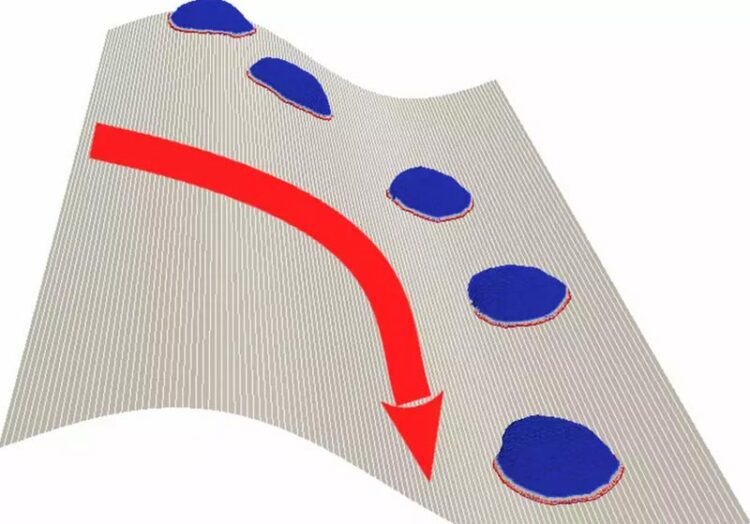How cells are ahead of the curve

The curvature of the surface determines the migration pattern of cells. This phenomenon called curvotaxis gave rise to a universal model for biological systems.
© Weizmann Institute of Science
The curvature of a surface determines the migration behavior of biological cells. They preferentially move along valleys or grooves while avoiding ridges. These findings with contribution from the Max Planck Institute for Dynamics and Self-Organization (MPI-DS) and the Weizmann Institute of Science gave rise to a model predicting cellular behavior. Such universal principles now allow a better understanding of the migration of immune and cancer cells, paving the way for new treatment options.
Cell migration within the body is a fundamental biological phenomenon. Immune cells constantly scout for pathogens and cancer cells migrate through the body causing metastasis. Inside the body, many surfaces such as tissues, blood vessels, or protrusions have a curved shape. “We were able to demonstrate that these curvatures directly affect the movement pattern of cells,” explains Eberhard Bodenschatz, director at the MPI-DS. The scientists could show experimentally that cells prefer certain curvatures over others, a phenomenon called “curvotaxis”.
To unravel this mechanism, they created a computer model of a vesicle containing active cytoskeletal components used for movement. This structure resembles a biological cell, migrating in the body. “Using this minimal cell model, we systematically explored the curvotaxis mechanism on various curved surfaces,” reports Nir Gov from the Weizmann Institute of Science, Israel. “The model cell shows specific migration patterns, for example where cells move along grooves of a wave-like shape, while avoiding motion along the ridges,” he continues.
This observation gave rise to a new model predicting cell behavior. The predictions of the model were then verified experimentally using several cell types. The scientists thus revealed a universal mechanism for cell motility that applies to many different types of migrating cells. On a convex or tubular structure such as the outside surface of a blood vessel, cells tend to move circumferentially around the shape. In contrast, axial forward or backward movement is preferred on concave structures (such as inside a blood vessel). “Our work highlights how physical principles shape universal behavior, even within the complex world of biology,” concludes Eberhard Bodenschatz.
Originalpublikation:
https://www.pnas.org/doi/10.1073/pnas.2306818121
Weitere Informationen:
Media Contact
All latest news from the category: Life Sciences and Chemistry
Articles and reports from the Life Sciences and chemistry area deal with applied and basic research into modern biology, chemistry and human medicine.
Valuable information can be found on a range of life sciences fields including bacteriology, biochemistry, bionics, bioinformatics, biophysics, biotechnology, genetics, geobotany, human biology, marine biology, microbiology, molecular biology, cellular biology, zoology, bioinorganic chemistry, microchemistry and environmental chemistry.
Newest articles
Faster, more energy-efficient way to manufacture an industrially important chemical
Zirconium combined with silicon nitride enhances the conversion of propane — present in natural gas — needed to create in-demand plastic, polypropylene. Polypropylene is a common type of plastic found…

Energy planning in Ghana as a role model for the world
Improving the resilience of energy systems in the Global South. What criteria should we use to better plan for resilient energy systems? How do socio-economic, technical and climate change related…

Artificial blood vessels could improve heart bypass outcomes
Artificial blood vessels could improve heart bypass outcomes. 3D-printed blood vessels, which closely mimic the properties of human veins, could transform the treatment of cardiovascular diseases. Strong, flexible, gel-like tubes…




















